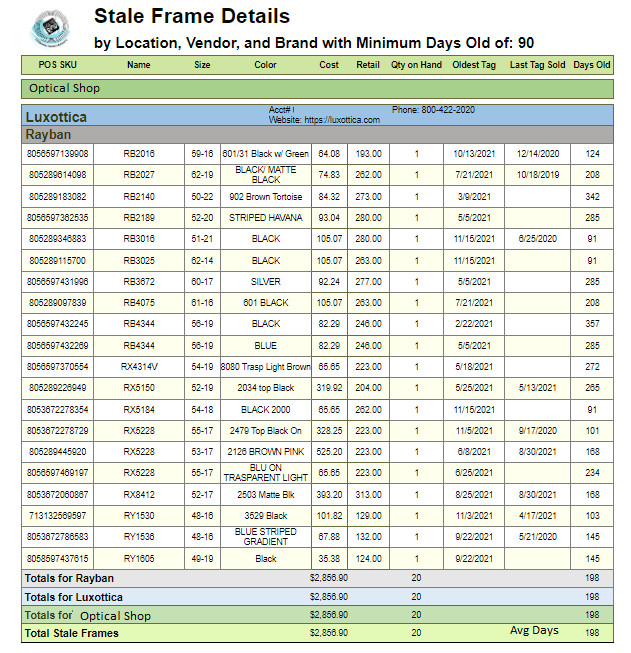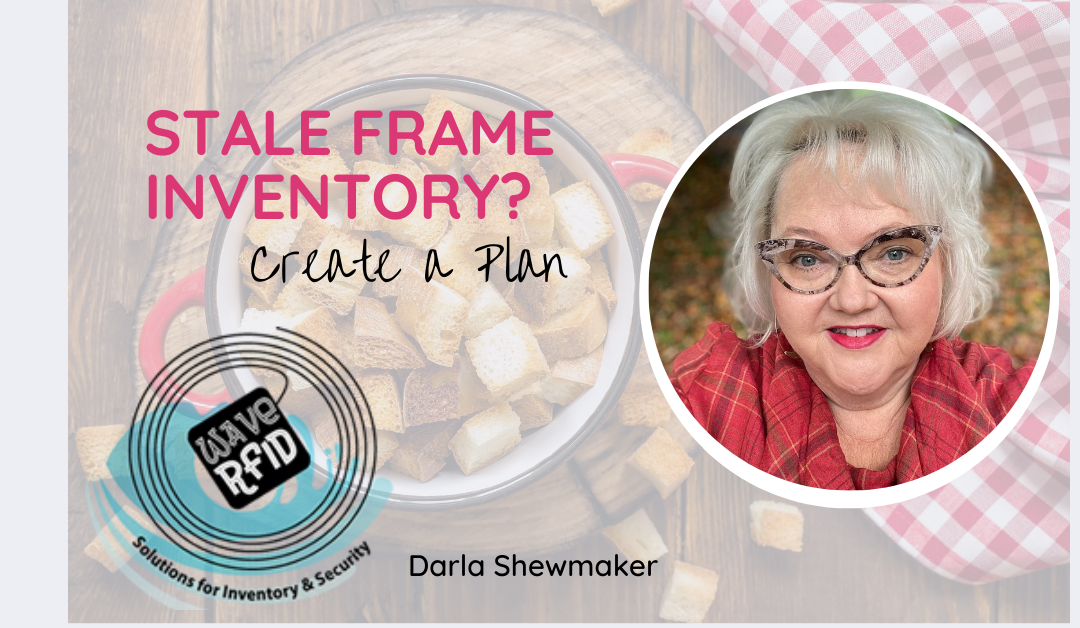The definition of “stale” according to Vocabulary.com –
“If something is stale, it’s no longer fresh. Ever bite into a piece of bread that’s been left out a little too long? Chances are it’s stale, or dry and hard to eat. Try making some croutons out of it.” https://www.vocabulary.com/dictionary/stale
What is stale inventory? The optical industry defines inventory items as stale when frames have been sitting on your boards taking up valuable space for more than 90 – 120 days without a sale. It’s important to track stale inventory monthly. It should also be an important part of your inventory review with your frame brand sales representative (Other key metrics: stock, sales, turn-rate, best sellers).
Once you know what is stale then you need to evaluate it and get feedback from your opticians. Did you sell the frame in other colors? Are there breakage problems causing the opticians to avoid it? Is the price not congruent with the quality of the product? Maybe, it doesn’t fit many of your patients well? Was it something you sold a lot in the past but now everyone is tired of it? Is it a seasonality issue? In the case of sunglasses, maybe they sell better in certain months of the year? Close out purchases have become a great way to boost profit margin. Unfortunately, you can get too much of a good thing. I see a lot of this inventory go stale. Practices buy 10 or 20 of the same SKU and the staff gets tired of selling it. So let’s say you buy 10 of these great deals at $20/ each. You can only sell 5. They were only $45/ each before the discount, so maybe not a great deal?
Should you return them for credit?
It’s important to know the return policies for your suppliers. The exchange rates vary as well as potential restocking fees. For example maybe the exchange rate is 3 to 1. Now you need to buy 3 more in order to send the 1 frame back for credit. What is the overall performance of the brand? Does it make sense to add more of a poorly moving product? Be aware of restocking fees. Maybe the vendor takes them back but with a 20% (or more) fee. You may also be responsible for shipping costs back to the vendor. All of this will cut into your profit margin. Lastly, please remember to verify those credits were posted to your monthly statement. A common approach I see is to store these in folders and hope for the best.
How to make croutons (bring stale inventory back to life)
You could take one or multiple approaches to give your stale inventory another chance before you take the return option. If the entire staff is on the plan it can be fun for everyone.
- Board Placement – most of your customers will be looking at frames that are eye level on your boards. Move them to a better position or feature them on a display.
- Merchandising – add signage and promotional materials to feature these products. It’s easy to make your own using Canva.
- Cross Selling – put it next to one of your best sellers!
- Transfer Locations – if you have more than one store you may want to try it at another location. It will be FRESH for them.
- Spiff your opticians – it can make the process fun, like a contest, and may cost you less than returning it.
- Make it part of a Promotion – imagination is key
Promotion Ideas
- Progressive discount sale board – 20% blue dots, 30% off green dots and 50% off red. Cute dots at ETSY!
- Make it a plano sunglass
- Free frame for contact lens patients buying glasses
- Free frame when purchased as a second pair
You’ve done everything – now what?
You have given it your best shot, but these frames won’t sell. What are some other options?
- You may want to consider a donation. Lions Club International and OneSight are viable options.
- Ebay, Etsy? – how about a store where you can sell this product for a small margin over cost? It’s still better than taking a loss.
Long term strategies
Create a process that you can follow. You can always change it but having it in place ensures you will at least be looking and can therefore make decisions. It’s important to have the tools in place that make the process as simple as possible. WaveRFID is a great tool to track stale inventory. It’s like that cool convection oven with all of the functions you bought to turn your bread into croutons! Each frame is uniquely identified with an RFID tag that allows you to track it back to the original purchase invoice.

This example report shows only one brand at a single location. It’s important to know that in this case the optical shop turn rate with Ray-Ban is about 5 times per year and they have about 80 active pieces on their board. Some of the frames in the sample above have sold previously, but aren’t moving any longer.
Of course the best option is to avoid being in the situation of piles of stale inventory. Consistently reviewing your buying strategies and suppliers is critical. Also consider how many vendors make up your product mix. Buying from fewer you get all the benefits of being a bigger fish in the pond. That can translate to better return policies, leniency on returns for discontinued product and overall improved customer service. Don’t forget to take advantage of all of the knowledge your frame representatives have accumulated. They are your partners in maximizing your sales and minimizing your losses from stale inventory.
